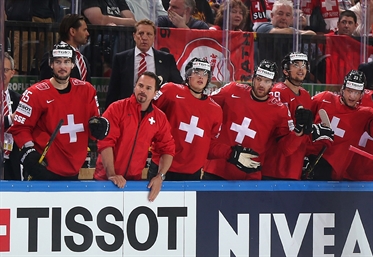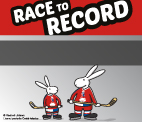Too many too many men
Too many too many men
A whopping 18 minors called

 Who's to blame for too many men on the ice? The coach or players? Photo: Andre Ringuette / HHOF-IIHF Images
Who's to blame for too many men on the ice? The coach or players? Photo: Andre Ringuette / HHOF-IIHF Images
But one of the most noticeable features of this World Championship has been the crazy number of penalties incurred for too many men.
In fact, there have been a total of 18 such calls so far, and we’re only two-thirds of the way through the tournament. This represents an unacceptable level of poor decision-making and execution at the players’ bench.
The breakdown of the 18 is very telling: Switzerland has incurred an incredible six of those infractions; Latvia 3; Denmark, France, and Germany two each; one to Slovenia and Sweden.
Let’s try to understand the problem.
First, a penalty for too many men occurs during game action as players change on the fly. Whose fault is it when the on-ice officials look around and see six skaters from one team on the ice?
The choices are simple. It’s the fault of the coach, the player coming onto the ice, or the player coming off. These 18 penalties have represented a cross-section of answers. Sometimes a coach gives players incorrect or confusing directions for changing, or makes a change out of the ordinary (A takes off C instead of B), leading to a misunderstanding by the player.
The player coming onto the ice has one simple job, though – to wait for the player he’s substituting to come off the ice. Therein lies the biggest subset of mistakes. “Come off the ice” means one very simple thing. A player is off the ice when he has one skate off the ice at the bench. Until that time, if the puck hits him or he plays the puck, he is considered on the ice.
Continue readingThe player coming off the ice must also be aware of his duty to get off when the coach tells him to, or when he is generally expected to. Either way, the players coming on and off cannot touch or play the puck in any manner until the change has been made according to the rules.
In some instances, teams have become lax about the rules, leading one to wonder if this is now a tactic, whereby the player coming onto the ice thinks he can be part of the play so long as he is in the area of the players’ bench, even if the player he is replacing is still on the ice.
Wrong.
“I don’t know,” answered Swiss defenceman Eric Blum when asked about his team’s problems changing players the other night. “I’m wondering too what’s going on out there. The other teams as well – Sweden had one of them tonight. Us again, I really don’t know what’s going on. Maybe it’s just the urge to get out and maybe just one or two metres where we’re too hasty to get out there.”
Teammate Kevin Romy agreed. “For sure, we’re taking too many. We just have to skate harder to the bench and just think a little bit more when the puck comes toward the bench, and make sure that we just don’t play the puck until the guy’s off the ice.”
One telling fact about these 18 penalties is that all but one have been taken by the lower-ranked nations. Canada, Russia, Finland, Czech Republic, United States – zero. Only Sweden has taken a penalty for too many men from the Big Six.
Bottom line, it’s a penalty that exposes lack of discipline and basic execution at the players’ bench. Whether a tactic or error or miscommunication, if it costs a team a medal or Olympic qualification or a spot in the World Ranking, it’s unacceptable.
Back to Overview























































































